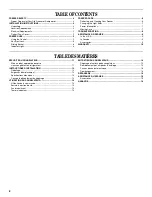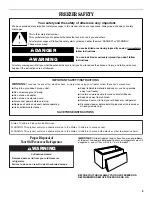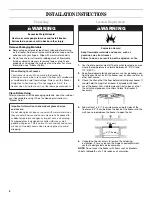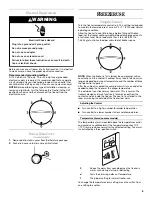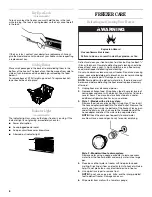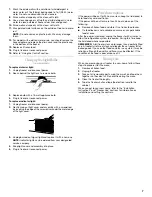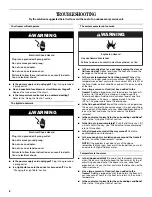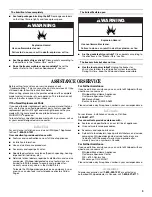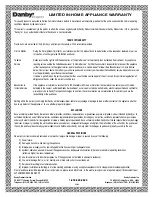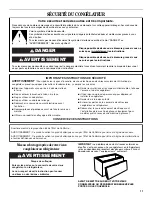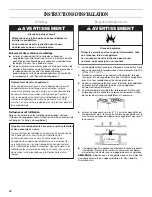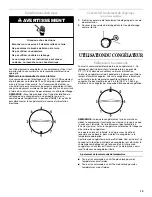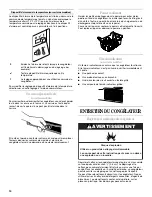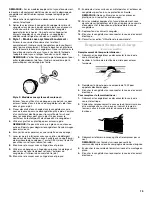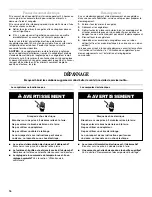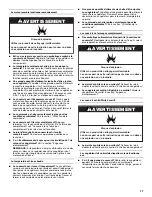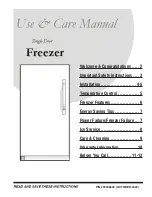
4
INSTALLATION INSTRUCTIONS
Unpacking
Remove Packaging Materials
■
Remove tape and glue residue from surfaces before turning
on the freezer. Rub a small amount of liquid dish soap over the
adhesive with your fingers. Wipe with warm water and dry.
■
Do not use sharp instruments, rubbing alcohol, flammable
fluids, or abrasive cleaners to remove tape or glue. These
products can damage the surface of your freezer. For more
information, see “Freezer Safety.”
Clean Before Using
After you remove all of the packaging materials, clean the inside of
your freezer before using it. See the cleaning instructions in
“Freezer Care.”
Location Requirements
1.
Your freezer operates most efficiently when located in an area
where the temperature is normally between 32°F (0°C) and
110°F (43°C).
2.
Keep flammable materials and vapors, such as gasoline, away
from freezer. Do not install the freezer near an oven, radiator or
other heat source.
3.
Check the strength of the floor before installing your freezer. It
should hold the weight of a freezer fully loaded with food.
4.
Level the freezer from side to side and front to back so that
the lid will seal properly. Use shims to level the freezer if
necessary.
5.
Allow at least a 3" (7.5 cm) clearance on both sides of the
freezer and 2" (5 cm) between the back of the freezer and the
wall. Leave room above the freezer to open the lid.
6.
It should not be necessary to remove the lid during
installation. If, for any reason, the hinges need adjustment,
contact a designated service company.
NOTE:
Do not cover the freezer with items such as blankets,
sheets, tablecloths, etc. This reduces air circulation.
WARNING
Excessive Weight Hazard
Use two or more people to move and install freezer.
Failure to do so can result in back or other injury.
When Moving Your Freezer:
Your freezer is heavy. When moving the freezer for
cleaning or service, be sure to cover the floor with cardboard
or hardboard to avoid floor damage. Always pull the freezer
straight out when moving it. Do not wiggle or “walk” the
freezer when trying to move it, as floor damage could occur.
Important information to know about glass shelves
and covers:
Do not clean glass shelves or covers with warm water when
they are cold. Shelves and covers may break if exposed to
sudden temperature changes or impact, such as bumping.
Tempered glass is designed to shatter into many small,
pebble-size pieces. This is normal. Glass shelves and covers
are heavy. Use both hands when removing them to avoid
dropping.
WARNING
Explosion Hazard
Keep flammable materials and vapors, such as
gasoline, away from freezer.
Failure to do so can result in death, explosion, or fire.
➧
2" (5 cm)
3" (7.5 cm)


